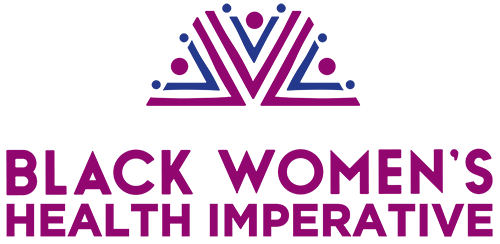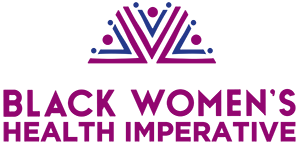The Special Open Enrollment Period for health insurance coverage through the Affordable Care Act (ACA) will run from February 15, 2021-May 15, 2021. If you don’t have health care coverage through your job or a government program such as Medicaid or Medicare, this is your opportunity to get covered. According to the most recent data there are still 14 percent of all Black women in the U.S. who do not have any kind of health insurance coverage. But you can get coverage for 2021 now.
The health insurance Marketplace is back open between Feb. 15-May 15. Visit HealthCare.gov to see your plan options, which may include Medicaid.
Access to quality, affordable health care is a basic human right, regardless of race, gender, income or zip code. Black women experience numerous health disparities because Black women have often faced significant barriers to accessing quality and affordable health care. The Affordable Care Act (ACA) has been and continues to be critical in moving towards the elimination of health disparities faced by Black women and their families.
Since the implementation of the ACA, uninsured rate for Black women dropped by more than 40 percent. Let’s decrease the uninsured rate by even more this year by spreading the word to Black women about Open Enrollment through BWHI’s #EnrollHer20 campaign from now until May 15th.
Every plan includes these 10 essential benefits
Ambulatory Services
Emergency Services
Hospitalization
Lab Services
Maternity and Newborn Care
Mental Health Substance Abuse
Prescriptions
Rehabilitation Services and Devices
Wellness Services & Chronic Disease Care
Pediatric Services
Get Covered By December 15… Health Coverage Open Enrollment
The best place to start is at healthcare.gov. That’s where the majority of Americans in the individual market will shop for a plan. But 11 states and the District of Columbia have their own marketplaces. Those states are: California, Colorado, Connecticut, Idaho, Maryland, Massachusetts, Minnesota, New York, Rhode Island, Vermont and Washington. To access your marketplace, go to healthcare.gov, click on “Get Coverage” and select your state. You will then be directed to click on your state marketplace or to click on “continue” to access the federal site.
You can of course enroll online but you can also call the marketplace call center at 800-318-2596 and apply over the phone. It accepts calls seven days a week, 24 hours a day.
There are trained navigators in your community, at nonprofits, community organizations and health departments ready to help you apply for coverage. You can go to localhelp.healthcare.gov, plug in your zip code, and a list of nearby navigators will pop up.
For most people enrollment ends on Sunday, Dec. 15, 2019. But if you live in the following six states and the District of Columbia you can benefit from the extended open enrollment deadline:
- California — Jan. 31
- Colorado — Jan. 15
- District of Columbia — Jan. 31
- Massachusetts — Jan. 23
- Minnesota — Dec. 23
- New York — Jan. 31
- Rhode Island — Dec. 31
Healthcare.gov is open every day. The exception is on Sundays between midnight and noon. And on the final day of Open Enrollment, Sunday, December 15, 2019 the site is open all day. But it is best to get in and enroll early.
The costs depend on how much you make. But don’t let that scare you off. Most of the 10 million people who already have insurance through the marketplace receive a federal subsidy to help them pay the monthly premiums. Remember you must pay your monthly premiums to stay in the plan.
In general, you may be eligible for a subsidy if, for example, you are single and your 2019 income falls between $12,490 and $49,960; or if you are a family of three and you have a household income between $21,330 and $85,320. You have options. You can choose to use the subsidy to lower your premium, or you can pay the full premium and deduct the subsidy from your federal income taxes.
In addition, more than half of marketplace enrollees qualify for assistance that defrays the cost of deductibles and copays. To be eligible, individual income in 2019 must be between $12,490 and $31,225, for example. To determine whether you will qualify, use the subsidy calculator at healthcare.gov/lower-costs.
If you qualify for a subsidy, you likely won’t be affected by premium increases. Under the ACA, the subsidy increases in proportion to the rate increases.
Enrolling is a lot easier if you are prepared with the documents you will need to provide:
- Birth dates and home addresses for all individuals who will be applying for coverage under the plan
- Social Security numbers, name of employer and income information for every member of your household, even if they aren’t all applying for coverage
- Estimated household income for 2020
- If you have a current policy have that policy number and plan ID of your current insurance plan
- Any letter or document your current plan has provided regarding renewal
Go to healthcare.gov/see-plans. You’ll be asked for personal details such as where you live, your age, gender and some health-related questions, such as “Do you smoke?” You will then be directed to a screen that will list all the plans available in your county.
The marketplace plans fall into four categories:
- Bronze — Lowest monthly premium; highest out-of-pocket costs; very high deductibles.
- Silver — The most popular plans. Moderate premiums; moderate out-of-pocket costs; deductibles are lower than bronze plans.
- Gold — High monthly premiums; lower out-of-pocket costs; low deductibles.
- Platinum — Highest monthly premiums, lowest out-of-pocket costs, very low deductibles.
There are also catastrophic plans, which include all the benefits required by the ACA, including free preventive care. These plans carry low monthly premiums and very high deductibles. But they are available only to individuals under age 30 and to those who get an exemption from the marketplace because, for example, they cannot afford coverage any other way.
You can find out more about the various types of plans at healthcare.gov
Yes. If you don’t do anything by Dec. 15 — or when open enrollment ends in your state — you will be automatically renewed in your current plan. If your plan is no longer available, the marketplace will enroll you in the most similar plan.
Yes, insurance plans come in and out of the market all the time. In addition, if you are currently enrolled, your doctor may leave the plan’s network in 2020 or join another network you are interested in. Premiums also vary from year to year.
The ACA still requires that nearly all Americans have health insurance. There are some exceptions: You can apply for a hardship exemption if, for example, you have filed for bankruptcy, cannot find affordable coverage or had a death in the family.
Related Blogs
Advocates Rally For Bill Keeping Free Breast Cancer Screening For 40+
By: Amy Lotven (alotven@iwpnews.com) Breast cancer advocates and a bipartisan group of lawmakers Friday (July...
Black Women’s Health Imperative and Other Leading Organizations Host Congressional Briefing and Social Media Advocacy Day on Climate Crisis and Maternal Health
Protecting the Health of Pregnant People and Babies WASHINGTON D.C. (May 24, 2021) -- Black...



